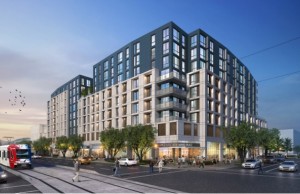Construction of new houses along the Wasatch Front has plummeted this year “almost entirely” because of a decline in affordability, according to a new report from Wells Fargo & Co.
In 2007, builders have taken out permits to build 6,875 houses, down 29 percent from 9,707 permits during the same time period in 2006, according to Construction Monitor, which tracks such activity.
Economist Kelly Matthews contends that a steady stream of double-digit increases in appreciation in recent years has left many Utahns struggling to be able to afford a home despite Utah’s booming economy and historically low interest rates nationwide.
“It’s not an economy problem or a mortgage rate problem,” he said at a news conference Thursday. “It’s a pricing problem. We have seen a tremendous decline in affordability.”
As an example, he points out that a family with an annual income of $51,000 in 2003 could have purchased a house valued at Salt Lake County’s average sale price of $187,000 with a 5 percent down payment. The buyers would have had a monthly payment of $1,300, with interest rates at the time in the range of 5.4 percent.
In the second quarter of this year, a family would have needed an annual income of nearly $90,000 to purchase a house priced at Salt Lake County’s average of $298,000 with a 5 percent down payment. The monthly payment would be about $2,250, Matthews said, with interest rates of 6.5 percent.
Data from the Salt Lake Board Realtors shows that although housing prices are still appreciating in most areas, unit sales of resale homes are down significantly from last year, supporting Matthew’s belief that home prices along the Wasatch Front will moderate and even decline at some point. In other markets with significant run-ups in home prices over several years, including Arizona and Nevada, prices eventually fell after demand slowed.
Sterling Jenson, regional managing director of Wells Capital Management, said tighter lending standards are also contributing to the affordability dilemma. In the wake of the nation’s subprime lending crisis, in which lenders made too many loans to high-risk borrowers, who are going into default in record numbers, borrowing standards have become more strict. “There are people that just don’t qualify [for a home loan] now,” he said.
By Lesley Mitchell — The Salt Lake Tribune



